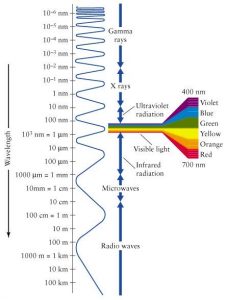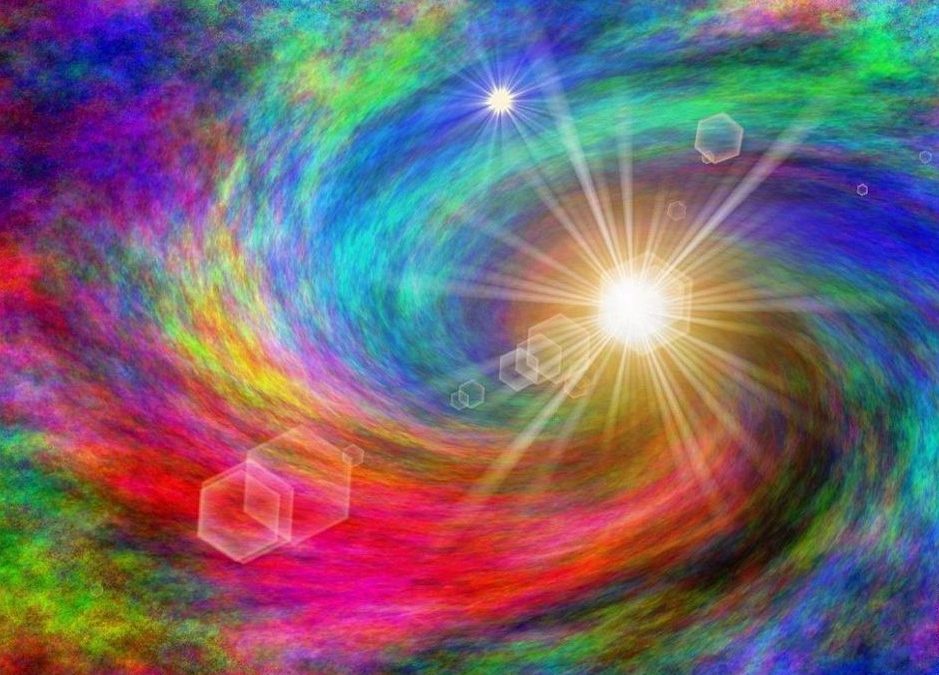The Power of Colour
Have you ever wondered why when skies are turquoise you feel more harmonised and energised than when skies are grey?
Here we explore the source of colours and their role in our world.
The sun a main source of life here on earth, emits energy in the form of waves known as the electromagnetic spectrum.
The electromagnetic spectrum is huge and the percentage of it which is visible to the human eye in the form of colours is 0.0035 percent.
Here we explore the power of the visible rainbow colour spectrum to impact our wellbeing.
The human eye and brain translate light into colours using light receptors within the eye.
The surface of an object reflects some colours and absorbs all others, we see the reflected light. A typical human eye can see approximately one million colours.
White light is a combination of all colours and black is the absence of all colours.
The visible light spectrum ranges from violet at 400nm to red at 700nm wavelength.
As well as each colour having its own unique wavelength, they each have specific frequencies. The larger the frequency the smaller the wavelength.
The higher the frequency the more energy it carries. Following this red has the lowest energy and violet the highest.
On the basis everything is energy, we are beings of light energy.
Research by Bruce Taino has shown that the human body average frequency is 68Hz and a healthy body resonates between 62 to 72MHz. When the body drops below 58MHz that is when disease starts.
Bacteria, viruses, and disease each have their own low frequency that influences the human energy field.
It is said that 528HZ boosts human immunity and is an ancient healing tone that creates harmony within the mind body and soul.
528 nanometres (nm) of sunlight radiates the colour greenish yellow in the colour spectrum, which is also the colour of chlorophyll in nature that is present in the pigments of plants. Which may explain the theory of why being out in nature boosts our immune system.
Cyan the colour of ocean and skies, is a colour much used since ancient times as a healing colour. One example of its use in ancient times was by the noblest members of ancient Egyptian society who were seen to drape turquoise around their necks it is also a colour widely used in ancient architecture in Turkey and central asia.
Cyan can be traced back to a dye produced from cornflower.
It has a wavelength of 490 to 520nm and frequency of 610 to 575THz
Cyan and red are complimentary colours, interestingly when combined, they make either white, black or grey depending on the colour system used.
White, black and grey are three colours which also have unique interesting features.
White reflects all colours, therefor absorbs the least heat.
Black absorbs all colours and UV rays, absorbs heat from the body, helping to keep it cool.
Grey is an intermediate colour between black and white. It is a neutral colour an achromatic colour, meaning literally that it is a colour without colour because it can be composed of black and white.
These properties explain the popular use of these colours in clothing in hot countries. Also, the use of vivid colours in the painting of buildings, as red and blue shades perform better at blocking UV-B rays.
As can be seen from this brief look at the energy of different colours, a correlation can be drawn between colours and the personal harmony we feel.
At times we also may feel drawn to certain colours. Maybe in the choice of colour for clothes, food, home décor etc, trust your instincts as it may well be a colour your body intuitively knows it needs to help bring harmony to it.
Eating a rainbow of colours in vegetables is also a good basis for a healthy diet. Based on the theory each colour has a unique vibrational energy you may find certain vegetables provide more energy upon consumption.
Also, if you are feeling under the weather, a walk-in sunshine in mother nature will help to boost your immunity and help you to feel more energised.
Have fun researching and learning more about the properties of different colours and the potential they have on impacting your world.
Here is a diagram sharing the wavelength and frequencies of different colours for your easy referencing.











I loved reading this information. I was looking for The Power of Words in which De Masaru Emoto did an experiment with using words and apples… I was looking for that. Do you now where I can find it as I think all his research is wonderful, but this on in [articular is very powerful and I wanted to show it to my Grandchildren.
Thank you
I like the Info and scientific data. As a Christian I believe this supports the wisdom behind God’s creation and how He knitted all things together. We have light in us because of who He is, His creation of light and color and life supports who He made us. It all points to who He is.
Beautiful article thank you